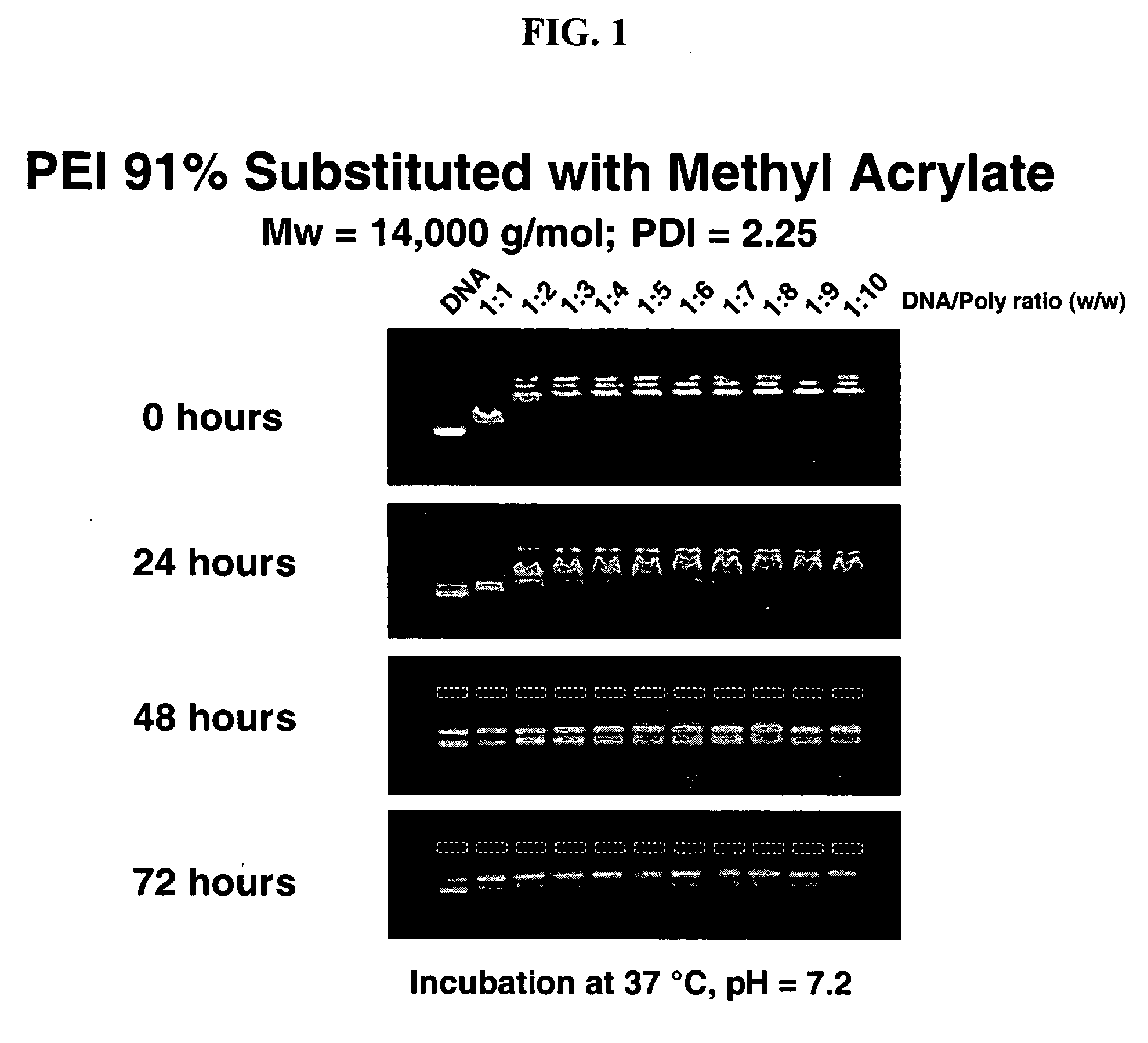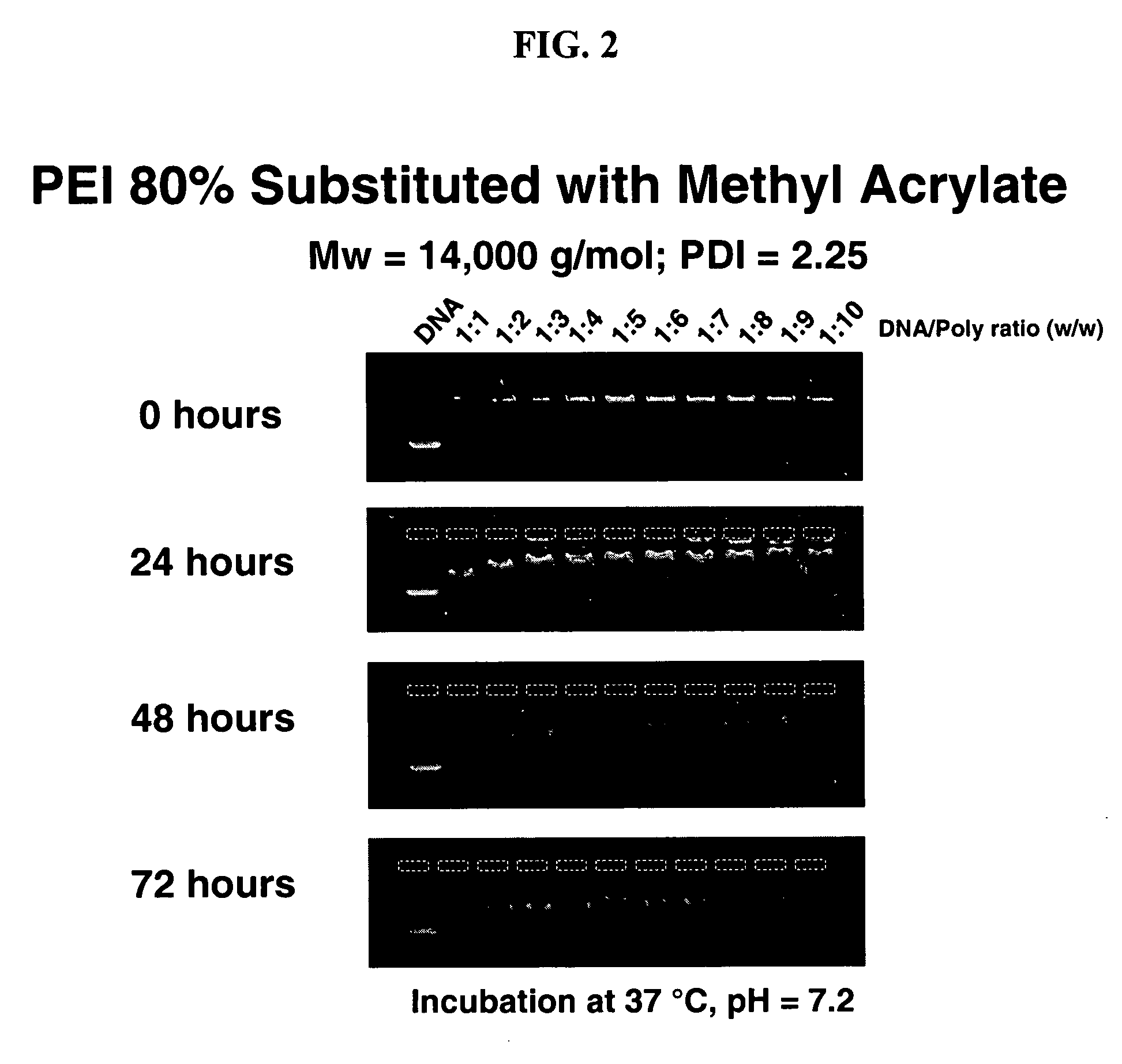Charge-dynamic polymers and delivery of anionic compounds
a cationic polymer and charge-dynamic technology, applied in the field of dynamic charge-dynamic polymers, can solve the problems of insufficient treatment, insufficient treatment, and insufficient treatment, and achieve the effect of more control over the change of the cationic charge density of the polymer
- Summary
- Abstract
- Description
- Claims
- Application Information
AI Technical Summary
Benefits of technology
Problems solved by technology
Method used
Image
Examples
examples
Polymer Synthesis
[0138] The conjugate addition of methyl acrylate to linear polyethylene imine was performed in the following general manner: To a solution of linear polyethylene imine (5 wt % in methanol) was added methyl acrylate (Aldrich). Polyethylene imine was obtained by hydrolyzing polyethyl oxazoline (Polysciences, Warrington, PA). Typically, the amount of methyl acrylate added was varied (e.g., from 0.25 to 1.2 equivalents relative to amine functionality in the PEI) to achieve desired mole percent substitutions (Table 1). The reaction mixtures were heated to 40° C. and stirred overnight. The resulting products were concentrated by rotary evaporation, dissolved in dichloromethane, and precipitated by hexanes. The precipitate was dried under vacuum to yield the desired product in near quantitative yield. Purified polymers were characterized by nuclear magnetic resonance spectroscopy (NMR), gel permeation chromatography (GPC), and elemental analysis to determine percent funct...
PUM
| Property | Measurement | Unit |
|---|---|---|
| Fraction | aaaaa | aaaaa |
| Fraction | aaaaa | aaaaa |
| Size | aaaaa | aaaaa |
Abstract
Description
Claims
Application Information
 Login to View More
Login to View More - R&D
- Intellectual Property
- Life Sciences
- Materials
- Tech Scout
- Unparalleled Data Quality
- Higher Quality Content
- 60% Fewer Hallucinations
Browse by: Latest US Patents, China's latest patents, Technical Efficacy Thesaurus, Application Domain, Technology Topic, Popular Technical Reports.
© 2025 PatSnap. All rights reserved.Legal|Privacy policy|Modern Slavery Act Transparency Statement|Sitemap|About US| Contact US: help@patsnap.com



